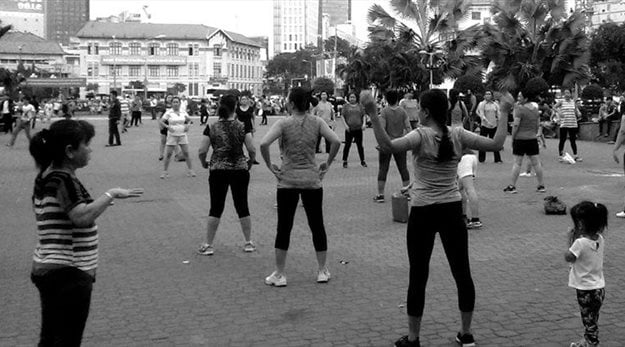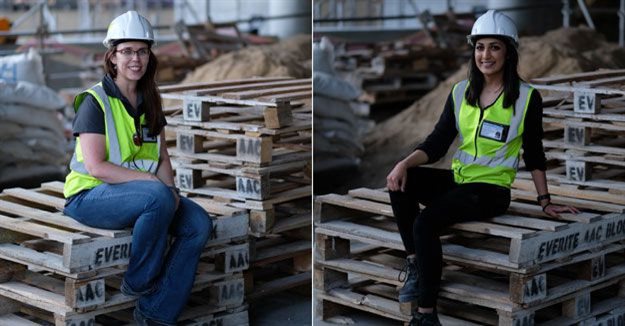Cyril Ramaphosa, South Africa's walking president, set tongues wagging when he first took office thanks to his habit of taking a brisk morning walk. From Gugulethu to Rosebank and the Cape Town seafront, the president hit the pavements, often attracting an entourage of followers. These moments proved more than just an opportunity to engage directly with a world leader, they highlighted the social value and cohesiveness which comes with breaking down physical barriers and bringing our streets to life with human interaction.

Cyril Ramaphosa, South Africa’s walking president
The fact that Ramaphosa’s daily ritual caused such a stir in South Africa is indicative of the closed nature of our high-walled suburbs and our segregated cities. In other parts of the world, French President Emmanuel Macron and Danish Prime Minister Lars Lokke Rasmussen can take a bike ride through Copenhagen without much ado. Or Thai King Maha Vajiralongkorn can cycle undisturbed in Lucerne, Switzerland. Or Icelandic Prime Minister Katrin Jakobsdottir can stroll, unaccompanied by a security detail, to her office. It barely raises an eyebrow.
In a healthy society, bumping into a president, an MP or the CEO of a global multinational should not be a newsworthy event. It should be the norm. In fact, as an architectural firm, we have long advocated for a more inclusive type of city, for doing away with walled communities and for a design ethos which flows from structure to streets – in the process creating new opportunities for interaction and collaboration.
Separate, but not equal
Much of our current situation must be attributable to the apartheid-era planning approach. Although it must be said that, in recent years, unchecked crime and the associated fear of hijackings and home invasions has buoyed the development of estates and walled communities. The combined result is a spatially distant approach, an uncoordinated hive of separateness. And a far cry from the inclusivity which, as a nation, we speak of in such rapt tones.

L-R: Christoph Malan and Patrick McInerney, directors, Co-Arc International Architects
Between the broken infrastructure and the traffic, it’s becoming harder and harder to walk the city in Gauteng, and indeed around the rest of the country. This is, of course, ironic given that the vast majority of South Africans are walkers and should be accommodated. In recent years, and in recognition of this fact, there has been some good progress made to correct the imbalance. But only in pockets. Under former City of Johannesburg mayor Parks Tau, and subsequently under the Democratic Alliance-lead administration, upgrades were affected to streets and parks in Soweto and several inner city precincts. But it is becoming increasingly clear that, as citizens, we need to take responsibility for our own pavements and for the health and inclusivity of our own neighbourhoods.
A call for collective action
The problem is that issues around urban planning, opposing the mushrooming of shopping malls and walled estates are far from being ‘sexy’ topics. As a result, there is no active citizenry demanding better amenities and a more intelligent use of community space. Many of us have gardens at home and private spaces to enjoy, so we don’t raise our voices in support of the voiceless who need access to better communal spaces.

The citizens of Ho Chi Minh City hold free exercise classes in the new public park near Ben Thrah Market. Photo credit: Patrick McInerney
Investment in streets, squares, parks and other public amenities does not return a dividend that can easily be reflected on a balance sheet and, superficially considered, it is, therefore an unattractive development proposition to both the public and the private sector. But in effect its value is immeasurable. Since the advent of settled civilisation, spaces for public interaction have been the very backbone of our society, manifesting as the agora in ancient Greece, the forum in ancient Rome, the Kgotla in southern Africa, market places, streets, ceremonial squares and playgrounds in civilisations across the world. This is where society interacts, where culture thrives, where the economic pulse is tangible, and the social contract is visibly enacted.
We, as architects, have a role to play, but we cannot do this alone. What is so desperately needed is greater interaction between professionals and government, and ongoing consultation with communities to understand how to breathe life into our cities.
This call to action should, at this time, also be tied into the inevitable economic recovery and infrastructure drive that has been promised as part of South Africa’s response to the Covid-19 crisis. Coupled to this should be a greater debate and reflection about the type of society we hope to see in the future.

L-R: Catharine Atkins, director, and Malika Walele, professional architect, Co-Arc International Architects
Digital vs human, you decide
The lockdown period, and seemingly overnight change in the way many of us work and live, has certainly highlighted a different way of doing things – one enabled by IT and digital solutions and taking the form of a greater uptake of work-from-home opportunities. Given those in the economy who need to work in teams or manufacturing, it is unlikely that manufacturing infrastructure will disappear, but Covid-19 has crystallised how easy it is to decentralise work and ensure greater flexibility in how we structure our time, where we live and what we require of our homes and our community spaces.
It means that in a social transition tied to technology, that we look at greater investments into data connectivity and its availability at a community level. It’s about ensuring, in particular, that poorer communities get the necessary fourth industrial revolution tools – such as free Wi-Fi or access to libraries with complimentary internet – to enable them to leapfrog into a greater economic participation.
While it’s easy to consider the digital reality for institutions such as private schools, which can certainly teach remotely, this is much more of a challenge in poorer communities and townships. That is, unless we build a digital framework into our urban design planning which promotes equality.
Patrick McInerney, Christoph Malan, Catharine Atkins and Malika Walele 18 Sep 2020
But there is another side to this debate: The social isolation and community estrangement caused by protracted isolation. The psychology of this new world of work will bring with it unique challenges around social interaction. As part of the human experience, this is an emerging trend which those tasked with planning our cities and our homes must consider. In South Africa, for example, a work-from-home reality means we will be increasingly isolated in our own homes and gardens, compared with Europe or Latin America and Asia where the streets are designed to host that interaction. This highlights the importance of reactivating our streets, breathing new life into our underutilised high streets and working to make isolated shopping malls more interactive.
Human beings are social by nature. We can’t just interact solely with the world through virtual means. A prime example is how everyone from joggers to dog walkers have taken back the streets since Level 5 lockdown ended, creating a place of interaction and exercise both in the urban centres and the suburbs. With the right foresight and planning, we could see this joviality unfolding on an even grander scale.
This is something of which we, as urbanists, must be aware. Just consider that after the end of the Spanish flu pandemic in 1920, the world erupted into a veritable party scene. The roaring '20s were a time of glitz and glamour, of dancing and merriment. An age of excess. You only need to read F Scott Fitzgerald’s The Great Gatsby to taste the urge for frivolity and fun and human interaction that permeated that time.
Building party spaces for the future is, obviously, not the best response to the Covid-19 fallout. Instead, now is the time to reclaim our commons, to apply our minds to putting our existing spaces to better or different use, to increase the availability of mixed-use developments and to make it easier to live, work and play within more flexible spaces, more creative places and more easily accessible areas. This process will require better social spaces and parks and the opening up of our streets. This evolution can, and should, be a guided and collaborative process - one in which architects have an important role to play in ensuring that presidents and prime ministers can continue to enjoy a space to roam.


































